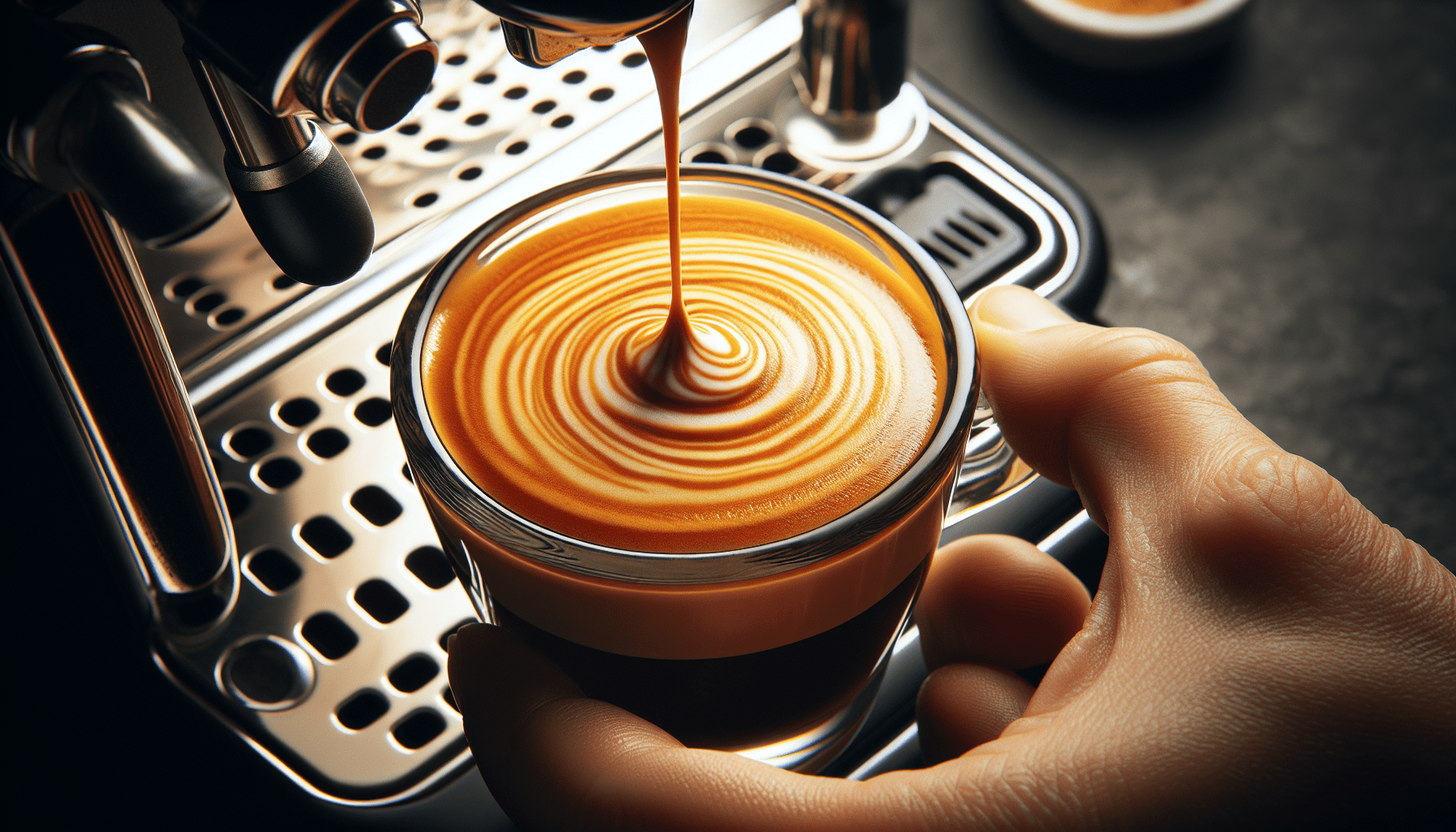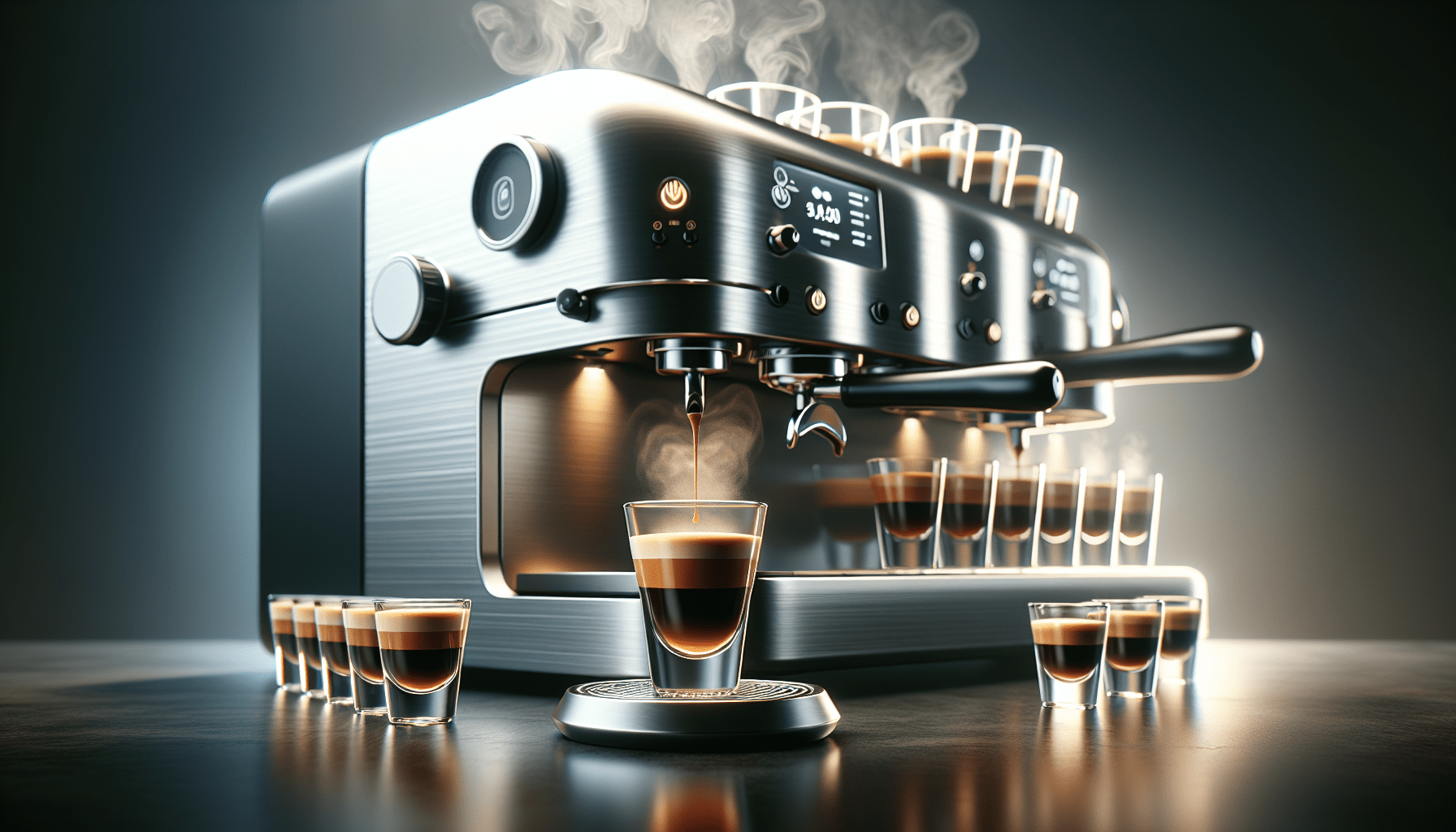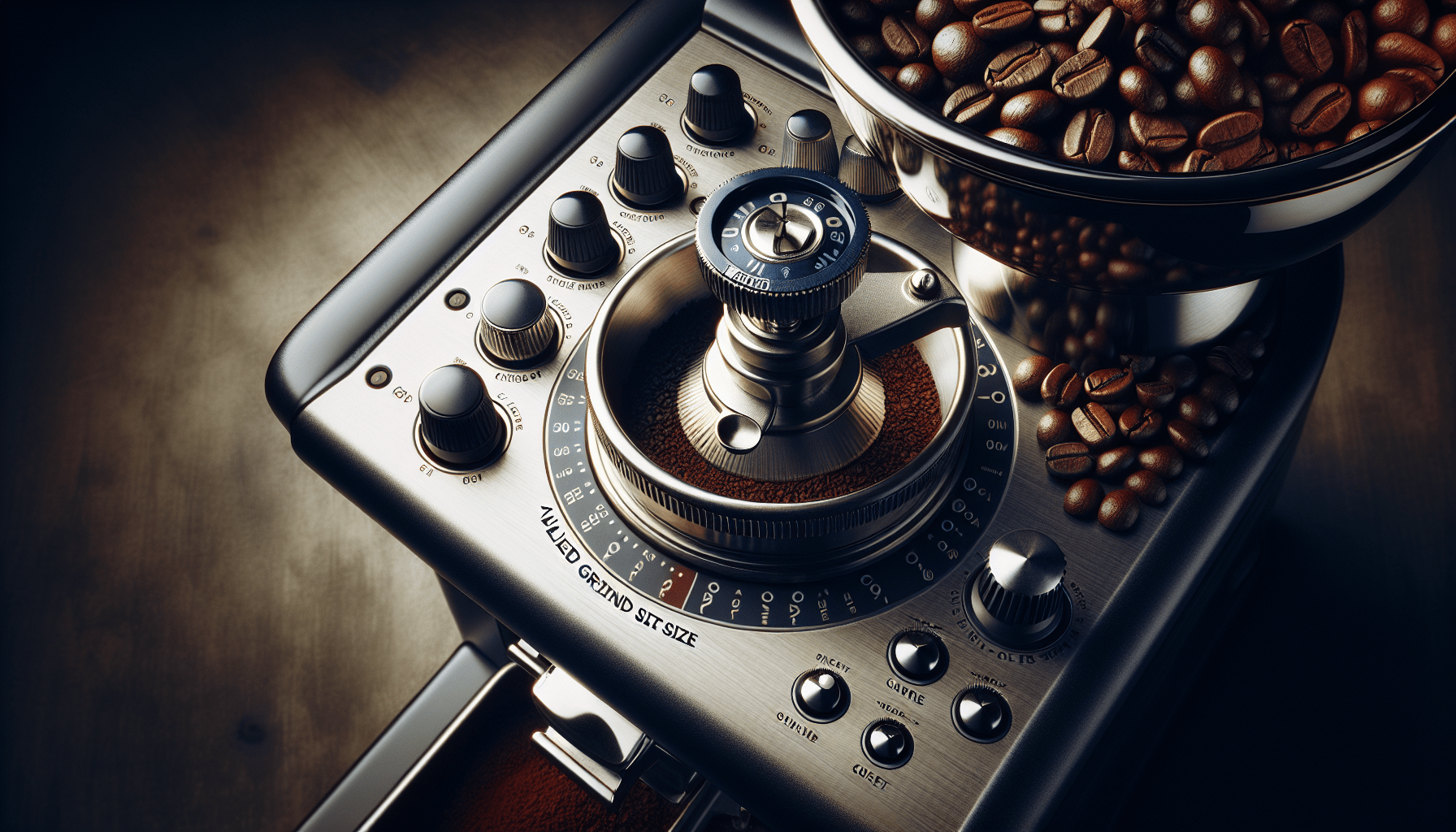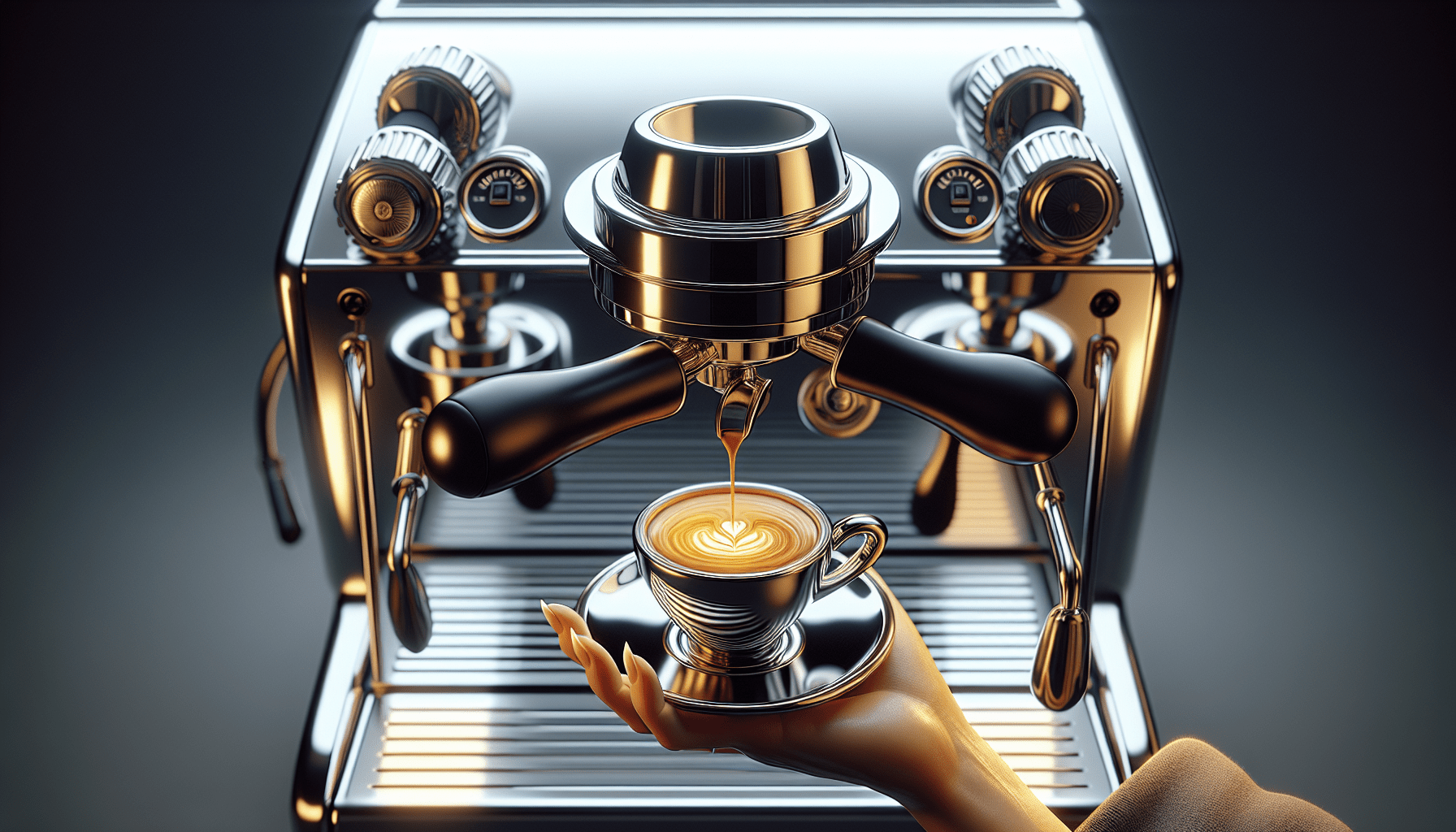Are you a coffee lover who is constantly in pursuit of the perfect cup of espresso? If you own a semi-automatic espresso machine, you may have wondered how to achieve that beautiful, velvety layer of foam on top of your shot – the crema. Well, wonder no more! In this article, we’ll show you some simple tips and tricks on how to adjust the crema produced by your semi-automatic espresso machine, elevating your coffee experience to new heights. So get ready to become a crema connoisseur and impress your friends with your barista skills!
Understanding crema
What is crema?
Crema is the velvety, golden-brown layer of foam that sits on top of a well-made espresso shot. It is an essential component of a great espresso, and it not only adds visual appeal but also contributes to the overall flavor and mouthfeel of the coffee. Crema is formed when carbon dioxide gas, trapped within the coffee grounds, is released under pressure during the brewing process. It contains flavorful oils and compounds that enhance the taste and aroma of the espresso.
Why is crema important?
Crema plays a crucial role in a good espresso for several reasons. Firstly, it acts as a natural barrier, preventing the escape of carbon dioxide from the coffee, preserving the freshness and flavor of the shot. Additionally, crema helps to trap and distribute the aromatics of the coffee, creating a rich and aromatic experience. Moreover, crema adds a creamy texture to the espresso, providing a smooth and velvety mouthfeel. Without a proper crema, your espresso may lack complexity and taste unbalanced.
Factors affecting crema
Several factors can affect the quality and consistency of crema produced by an espresso machine. The first and most important factor is the coffee beans used. The choice between Arabica and Robusta beans, as well as their freshness and origin, can greatly influence the crema. The grind size and consistency of the coffee grounds, the pressure used during tamping, the preheating of the espresso machine, the extraction time, the water quality and temperature, and the brewing pressure also play significant roles in the crema formation.
Choosing the right coffee beans
Arabica vs. Robusta
The type of coffee beans used can considerably affect the crema quality. Arabica beans are known for their superior quality and milder flavor, producing a rich and nuanced crema. While Robusta beans tend to have a higher caffeine content and a stronger, more bitter taste, they can also deliver a thicker and more persistent crema. It ultimately comes down to personal preference, but a blend of both Arabica and Robusta beans often provides a well-rounded crema.
Freshly roasted beans
To achieve the best crema, it is essential to use freshly roasted beans. Coffee beans are at their peak flavor potential within two weeks of being roasted, so try to purchase them as close to the roast date as possible. Fresher beans have a higher carbon dioxide content, which contributes to the formation of a more vibrant and flavorful crema. Look for local coffee roasters or specialty shops where you can find freshly roasted beans.
Single-origin vs. blends
Single-origin beans come from a specific region and offer unique flavor profiles, making them a popular choice for coffee enthusiasts looking to explore different taste experiences. Blends, on the other hand, combine beans from various origins to create a well-balanced and consistent flavor. Both options can produce excellent crema, so it ultimately depends on your preferences and the flavor profile you are seeking.
Grinding the coffee beans
The importance of a consistent grind
Consistency in grind size is paramount when aiming for a perfect crema. Unevenly ground coffee can lead to over-extraction or under-extraction, resulting in a subpar crema. To ensure consistency, invest in a high-quality burr grinder rather than a blade grinder. Burr grinders provide a more precise and consistent grind, allowing for better control over the extraction process.
Choosing the right grind size
The grind size plays a crucial role in crema formation. For a semi-automatic espresso machine, a fine to medium-fine grind is typically recommended. This allows for a balanced extraction, enabling the flavors and oils to be properly extracted without excessive bitterness. Adjusting the grind size can help control the extraction time and the flow rate, both of which can influence the crema quality.
Using a burr grinder
As mentioned earlier, using a burr grinder is highly recommended for achieving a consistent grind size. Burr grinders crush the beans between two abrasive surfaces, resulting in a uniform particle size. This consistency is key to obtaining the optimal crema. When using a burr grinder, make sure to adjust the settings accordingly to achieve the desired grind size, taking into consideration the specific characteristics of your espresso machine and the type of coffee beans you are using.
Tamping the coffee grounds
What is tamping?
Tamping is the process of compacting the coffee grounds into a puck shape within the espresso machine’s portafilter. It is a crucial step that ensures even water distribution and proper extraction. Tamping helps to create resistance, allowing water to evenly flow through the coffee grounds and extract the flavors and oils necessary for a rich and flavorful crema.
The right amount of pressure
Achieving the right amount of pressure while tamping is essential for an espresso shot with a perfect crema. The general recommendation is to apply approximately 30 pounds of pressure when tamping. However, it is important to keep in mind that each espresso machine and coffee blend may require slight adjustments. Experimenting with different pressures can help you find the sweet spot that produces the best crema with your specific setup.
Using a tamper
A good-quality tamper is an indispensable tool for tamping the coffee grounds effectively and consistently. Look for a tamper that fits your portafilter properly and feels comfortable in your hand. A well-designed tamper with a flat base ensures an even and level tamp, which contributes to an even extraction and a beautiful crema. Practice your tamping technique to achieve a consistent pressure and level tamp throughout the puck.
Preheating the espresso machine
Why preheating is important
Preheating your espresso machine is a crucial step in achieving an optimal crema. Preheating ensures that the brewing temperature remains stable, preventing temperature fluctuations that can negatively impact the extraction and the crema quality. By bringing the machine to the proper operating temperature, you create an ideal environment for extracting the coffee’s flavors and oils, resulting in a better crema.
Methods for preheating
There are several methods you can use to preheat your espresso machine. One common method is to run hot water through the group head and portafilter before brewing. This helps to heat up the metal components and remove any residual moisture, ensuring a consistent temperature throughout the brewing process. Another method is to use a tool like a preheating disc or a dedicated cup warmer to heat the cups before serving the espresso. This helps maintain the desired temperature of the drink and keeps the crema intact for a longer period.
The ideal temperature
The ideal brewing temperature for espresso typically falls between 195°F and 205°F (90°C and 96°C). This temperature range allows for the proper extraction of flavors without causing excessive bitterness. It is important to note that each espresso machine may have its own temperature parameters, so consult your machine’s manual or adjust the temperature setting accordingly to achieve the best results. Consistency in temperature is key to producing a beautiful and consistent crema.
Proper extraction time
Understanding extraction time
Extraction time refers to the duration it takes for water to pass through the coffee grounds during the brewing process. Proper extraction time is crucial for achieving the desired crema. Over-extraction can result in a bitter and unpleasant taste, while under-extraction can lead to a weak and lackluster crema. The ideal extraction time for espresso is typically between 20 and 30 seconds, but it can vary based on the coffee blend, grind size, and personal preferences.
Measuring the extraction time
To measure the extraction time accurately, use a stopwatch or a timer specifically designed for espresso brewing. Start the timer as soon as you begin the brewing process, and stop it as soon as you finish extracting the desired volume of espresso. Monitor the time consistently to ensure you maintain a consistent extraction time. By making small adjustments to the grind size, tamping pressure, and extraction time, you can fine-tune the crema quality and taste to your preference.
Adjusting for desired crema
If the crema is too thin or lacking in volume, try adjusting the extraction time slightly longer to allow for more coffee oils and flavors to be extracted. Conversely, if the crema is too thick or excessively dark, consider reducing the extraction time to avoid over-extraction. Keep in mind that the ideal crema may vary depending on personal taste preferences, so experimentation is key. With practice and adjustments, you can achieve the perfect crema that suits your palate.
Water quality and temperature
Importance of water quality
Water quality is often overlooked, but it plays a significant role in the crema formation and overall flavor of the espresso. Using filtered or purified water is highly recommended to ensure the removal of impurities that can affect the taste and aroma of your coffee. The presence of minerals, such as calcium and magnesium, can also impact the crema formation. Balancing the mineral content in the water can contribute to a better crema and a more pleasant espresso experience.
The ideal water temperature
Maintaining a consistent water temperature is crucial for achieving an optimal crema. As mentioned earlier, the ideal brewing temperature range is between 195°F and 205°F (90°C and 96°C). However, using water that is too hot can scorch the coffee grounds and result in a bitter taste, while water that is too cold may not extract the flavors and oils properly, resulting in a weak crema. Investing in a quality espresso machine with precise temperature control can help you achieve the best water temperature for crema perfection.
How to achieve the right temperature
To achieve the right water temperature, it is vital to follow the manufacturer’s recommendations for your specific espresso machine. Some machines may have built-in temperature control settings, while others may require you to manually adjust the temperature. Allow the machine to heat up adequately before brewing, and monitor the temperature consistently to ensure it stays within the recommended range. By maintaining the appropriate water temperature throughout the brewing process, you can maximize the crema quality and flavor extraction.
Using the correct brewing pressure
Understanding brewing pressure
Brewing pressure refers to the force applied to the coffee grounds during the extraction process. It plays a critical role in crema formation and extraction efficiency. The ideal brewing pressure for espresso is typically around 9 bars. This pressure allows for optimal crema extraction while preventing over-extraction. Understanding and controlling the brewing pressure is crucial for achieving the desired crema consistency and flavor.
Adjusting the pressure
Most modern espresso machines come equipped with built-in mechanisms to regulate the brewing pressure automatically. However, some machines may allow manual adjustments to fine-tune the pressure if desired. If you have control over the brewing pressure, experiment with slight adjustments to observe the impact on the crema quality. Keep in mind that drastic changes in pressure may result in undesirable outcomes, so make gradual modifications and monitor the effects.
Checking the machine’s pressure gauge
Many espresso machines have an integrated pressure gauge that provides a visual representation of the brewing pressure. This gauge helps you monitor and maintain the optimal brewing pressure for crema perfection. Pay attention to the gauge during the brewing process, ensuring that the needle remains within the recommended range. If your machine lacks a pressure gauge, consult the manufacturer’s instructions or consider investing in a separate pressure gauge to ensure accurate pressure control.
Cleaning and maintenance
Regular cleaning routine
Regular cleaning is essential to maintain the performance and longevity of your espresso machine. A clean machine also contributes to the quality of the crema. Create a regular cleaning routine that includes daily maintenance tasks such as wiping the steam wand, cleaning the drip tray, and removing any coffee residues from the portafilter. Additionally, follow the manufacturer’s guidelines for periodic deep cleaning and descaling to prevent the buildup of mineral deposits that can affect the machine’s functionality and the taste of your espresso.
Descale the machine
Descaling is a vital part of espresso machine maintenance, as it removes the mineral deposits that accumulate over time. These deposits can obstruct water flow, affect temperature stability, and compromise the crema quality. Follow the manufacturer’s instructions for descaling, using the appropriate descaling solution or a mixture of vinegar and water. Regular descaling not only maintains the crema quality but also prolongs the life of your espresso machine.
Cleaning the brew head
The brew head is where water comes into contact with the coffee grounds, making it a critical component for crema extraction. Clean the brew head regularly to ensure optimal performance and crema quality. Remove the portafilter and rinse the brew head with hot water, using a small brush to remove any leftover coffee grounds or residue. Wipe the brew head dry before reattaching the portafilter. Keeping the brew head clean prevents any buildup that could negatively impact crema production.
Practice and experimentation
Trial and error
Achieving the perfect crema requires practice and a bit of trial and error. Every espresso machine and coffee blend may have unique characteristics and requirements, so be prepared to experiment and make adjustments along the way. Fine-tuning the grind size, tamping pressure, extraction time, and other variables will help you understand how they impact the crema quality. Embrace the learning process, take notes on your adjustments, and learn from each cup you make.
Keep a record
To track your progress and find the ideal settings for your specific setup, consider keeping a record of your espresso brewing. Note down the details such as the coffee blend, grind size, tamping pressure, extraction time, water temperature, and any modifications made. By referring back to your records, you can replicate successful outcomes and troubleshoot any crema-related issues that may arise.
Seek guidance from professionals
No one knows espresso better than the professionals. If you are struggling to achieve the desired crema despite your efforts, don’t hesitate to seek guidance from experienced baristas, coffee roasters, or espresso machine technicians. They can provide valuable insights, tips, and advice tailored to your specific equipment and coffee preferences. With their guidance, you can learn new techniques, gain a deeper understanding of the crema-making process, and ultimately make the most out of your semi-automatic espresso machine.




